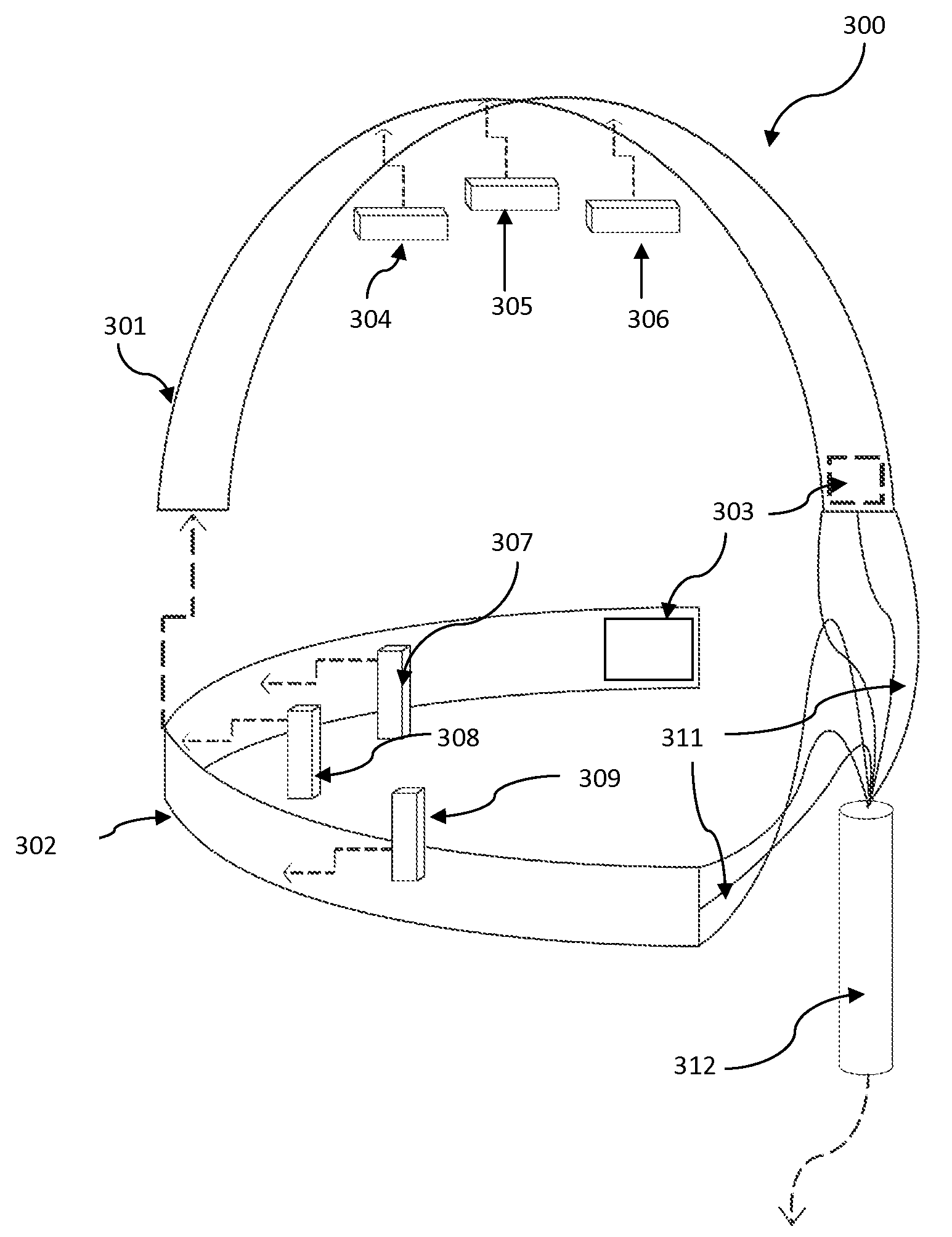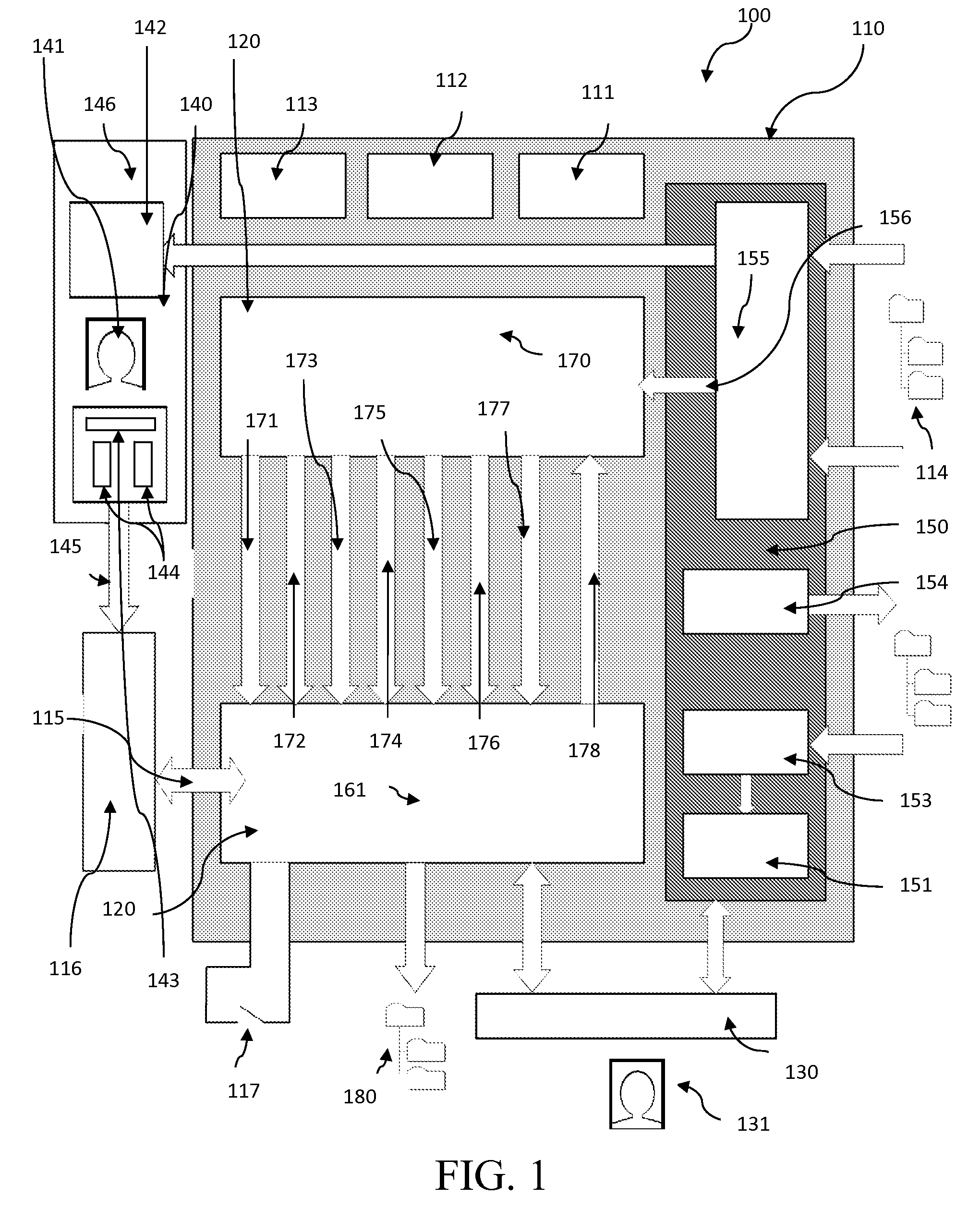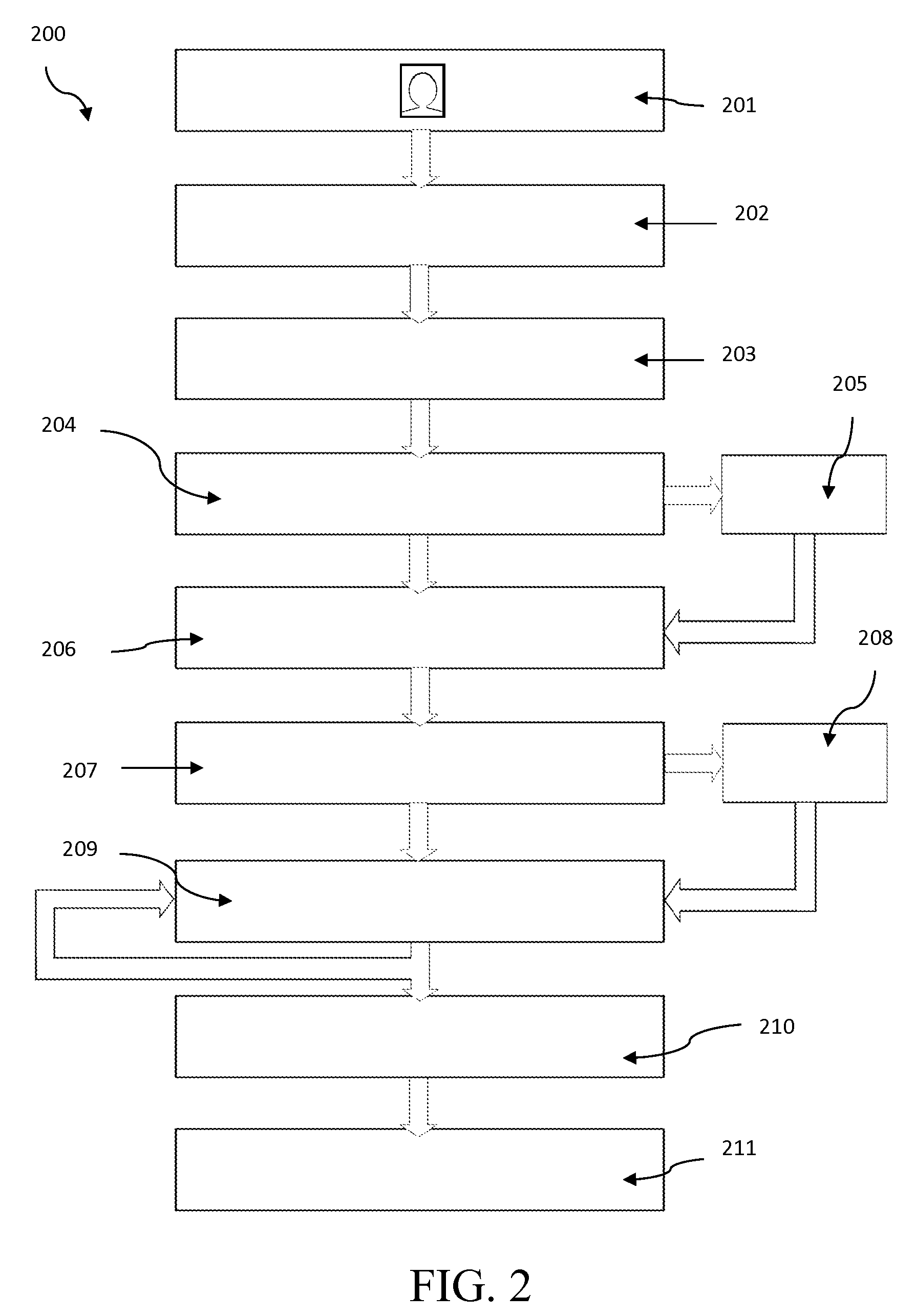System and Method for Knowledge Verification Utilizing Biopotentials and Physiologic Metrics
- Summary
- Abstract
- Description
- Claims
- Application Information
AI Technical Summary
Benefits of technology
Problems solved by technology
Method used
Image
Examples
Embodiment Construction
[0059]Although those of ordinary skill in the art will readily recognize many alternative embodiments, especially in light of the illustrations provided herein, this detailed description is of the preferred embodiment of the present invention, a system and method for knowledge verification utilizing biopotentials and physiologic metrics.
[0060]In general, as shown in FIG. 1, a system and method for the verification of concealed knowledge of the present invention is referred to by the numeral 100 and generally comprises a computer-based device 110, software for performing the steps of the invention 120, operator control interface 130, and human subject interface 140.
[0061]Referring now specifically to FIG. 1, a system and method for knowledge verification utilizing biopotentials and physiologic metrics includes a computer 110 well known in the art and commercially available under such trademarks as IBM®, Compaq®, and Dell® having a central processor (CP) 111 that is well known in the ...
PUM
 Login to View More
Login to View More Abstract
Description
Claims
Application Information
 Login to View More
Login to View More - R&D
- Intellectual Property
- Life Sciences
- Materials
- Tech Scout
- Unparalleled Data Quality
- Higher Quality Content
- 60% Fewer Hallucinations
Browse by: Latest US Patents, China's latest patents, Technical Efficacy Thesaurus, Application Domain, Technology Topic, Popular Technical Reports.
© 2025 PatSnap. All rights reserved.Legal|Privacy policy|Modern Slavery Act Transparency Statement|Sitemap|About US| Contact US: help@patsnap.com



